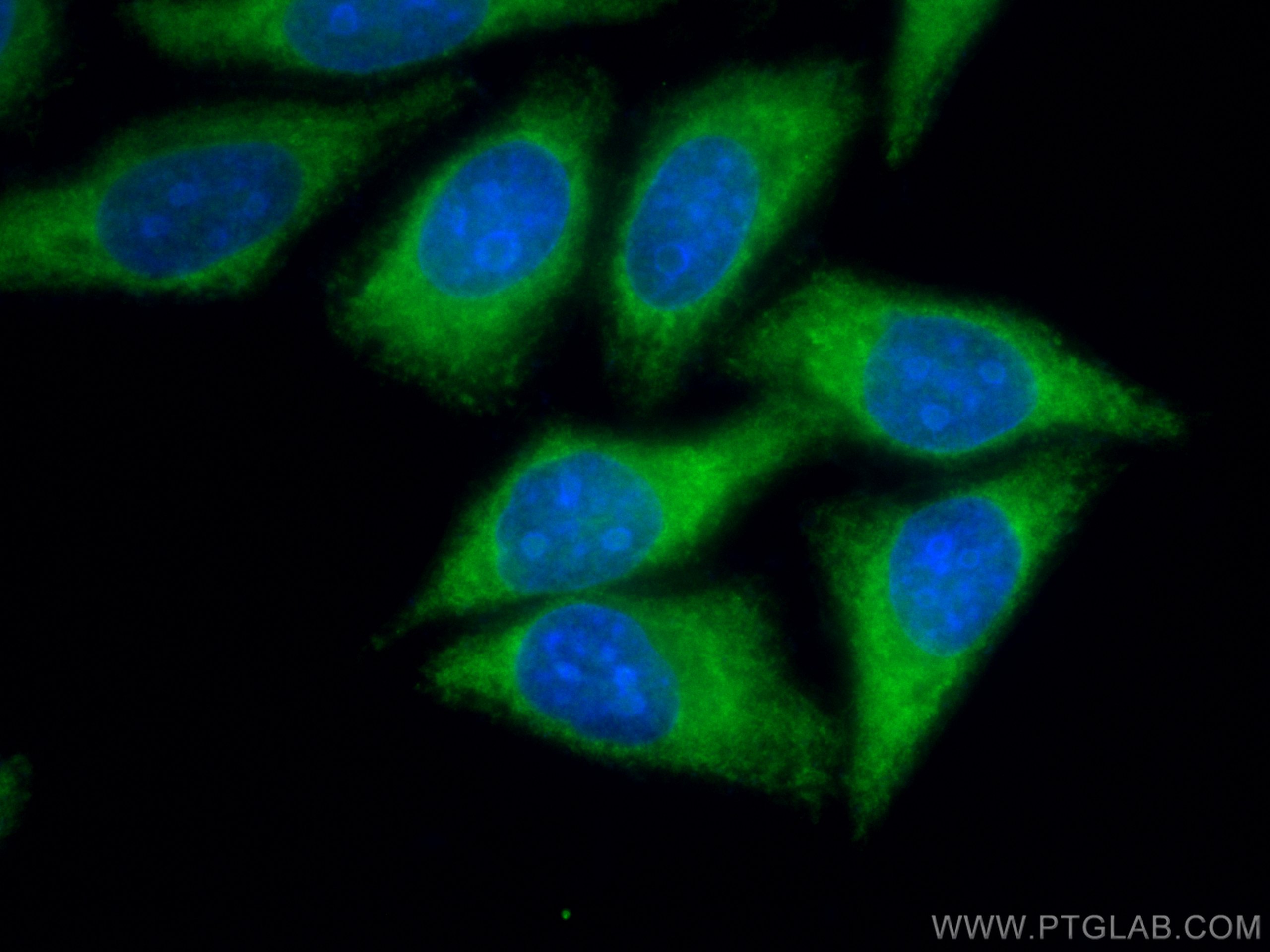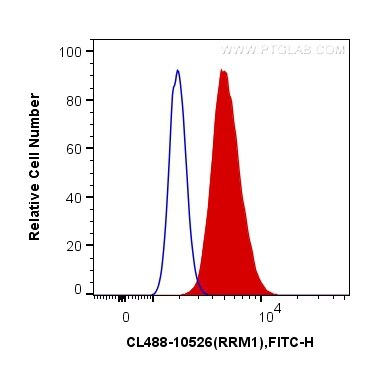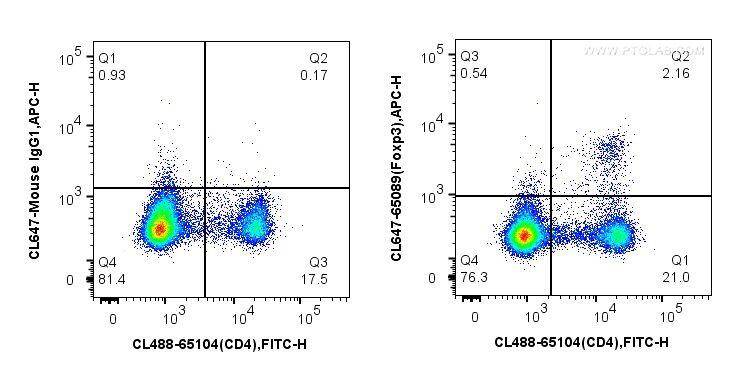- Featured Product
- KD/KO Validated
CoraLite® Plus 488-conjugated RRM1 Polyclonal antibody
RRM1 Polyclonal Antibody for FC (Intra), IF
Host / Isotype
Rabbit / IgG
Reactivity
human, mouse, rat, monkey
Applications
IF, FC (Intra)
Conjugate
CoraLite® Plus 488 Fluorescent Dye
Cat no : CL488-10526
Synonyms
Validation Data Gallery
Tested Applications
| Positive IF detected in | HepG2 cells |
| Positive FC detected in | A549 cells |
Recommended dilution
| Application | Dilution |
|---|---|
| Immunofluorescence (IF) | IF : 1:50-1:500 |
| Flow Cytometry (FC) | FC : 0.40 ug per 10^6 cells in a 100 µl suspension |
| Sample-dependent, check data in validation data gallery | |
Product Information
CL488-10526 targets RRM1 in IF, FC (Intra) applications and shows reactivity with human, mouse, rat, monkey samples.
| Tested Reactivity | human, mouse, rat, monkey |
| Host / Isotype | Rabbit / IgG |
| Class | Polyclonal |
| Type | Antibody |
| Immunogen | RRM1 fusion protein Ag0789 相同性解析による交差性が予測される生物種 |
| Full Name | ribonucleotide reductase M1 |
| Calculated molecular weight | 90 kDa |
| Observed molecular weight | 90 kDa |
| GenBank accession number | BC006498 |
| Gene symbol | RRM1 |
| Gene ID (NCBI) | 6240 |
| RRID | AB_2918984 |
| Conjugate | CoraLite® Plus 488 Fluorescent Dye |
| Excitation/Emission maxima wavelengths | 493 nm / 522 nm |
| Form | Liquid |
| Purification Method | Antigen Affinity Purified |
| Storage Buffer | PBS with 50% Glycerol, 0.05% Proclin300, 0.5% BSA, pH 7.3. |
| Storage Conditions | Store at -20°C. Avoid exposure to light. Aliquoting is unnecessary for -20oC storage. |
Background Information
Ribonucleoside-diphosphate reductase large subunit (RRM1) is the main enzyme for de novo deoxyribonucleotide
synthesis necessary for DNA synthesis during the cell cycle as well as during DNA repair.
What is the molecular weight of RRM1?
The molecular weight of RRM1 is 90 kDa. RRM1 is a part of ribonucleotide reductase (RNR), which is composed
of two large RRM1 and two small RRM2 subunits in S phase and two large RRM1 and two alternative small p53R2
subunits in non-dividing quiescent cells (PMID: 17416930).
What is the subcellular localization of RRM1?
RRM1 localizes to the cytoplasm, where it is responsible for dNTP production, forming a complex with RRM2.
However, RRM1 can be recruited to DNA damage sites in the nucleus via interaction with Tip60 (PMID: 20159953).
What is the tissue expression pattern of RRM1?
RRM1 is ubiquitously expressed.
How is RRM1 expression regulated during the cell cycle and upon DNA damage?
Rrm1 gene expression levels depend on the cell cycle, and the highest mRNA levels are observed in S phase.
However, RRM1 protein levels are constant throughout the cell cycle due to long protein half-life, contrary to
RRM2, which is actively degraded after cell exit from S phase. During DNA damage, e.g., induced with genotoxins
or UV light, expression of RRM1 and RRM2/p53R2 is upregulated (PMID: 1551913 and 8798592).
Protocols
| Product Specific Protocols | |
|---|---|
| IF protocol for CL Plus 488 RRM1 antibody CL488-10526 | Download protocol |
| FC protocol for CL Plus 488 RRM1 antibody CL488-10526 | Download protocol |
| Standard Protocols | |
|---|---|
| Click here to view our Standard Protocols |




